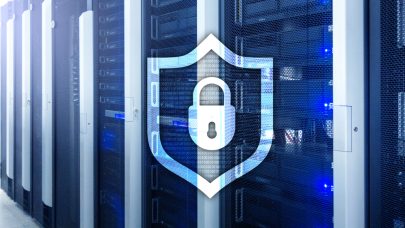
HPC Hardware Contracts: Backlash as Security Ignored in Performance Pursuit
November 16, 2023
The security of supercomputers has been grossly ignored in the pursuit of horsepower. Still, there is a growing realization that security is needed to prevent b Read more…

Leveraging Machine Learning in Dark Matter Research for the Aurora Exascale System
September 25, 2023
Scientists have unlocked many secrets about particle interactions at atomic and subatomic levels. However, one mystery that has eluded researchers is dark matte Read more…

MIT Researchers Successfully Integrate 2D Materials Directly on Silicon Circuit
May 4, 2023
At the MIT.nano facility, researchers demonstrated a newly developed low-temperature process for growing 2D transition metal dichalcogenide (TMD) materials righ Read more…

Meta, MIT, Others Test Robotic Arm in Optical AI Infrastructure
April 19, 2023
Researchers at Meta, MIT and other institutions connected servers with a dozen Nvidia GPUs with optical switches and a robotic arm, devising a new interconnect Read more…

MIT Introduces Twist – A New Quantum Programming Language to Help Curb Errors
February 24, 2022
Programming quantum computers presents a host of problems. Consider the role of entanglement, the idea that qubits can be inextricably linked; it’s the basis Read more…

NSF Awards $11M to SDSC, MIT and Univ. of Oregon to Secure the Internet
October 14, 2021
From a security standpoint, the internet is a problem. The infrastructure developed decades ago has cracked, leaked and been patched up innumerable times, leavi Read more…

Will Approximation Drive Post-Moore’s Law HPC Gains?
July 26, 2021
“Hardware-based improvements are going to get more and more difficult,” said Neil Thompson, an innovation scholar at MIT’s Computer Science and Artificial Intelligence Lab (CSAIL). “I think that’s something that this crowd will probably, actually, be already familiar with.” Thompson, speaking... Read more…
MIT Makes a Big Breakthrough in Nonsilicon Transistors
December 10, 2020
What if Silicon Valley moved beyond silicon? In the 80’s, Seymour Cray was asking the same question, delivering at Supercomputing 1988 a talk titled “What’s All This About Gallium Arsenide?” The supercomputing legend intended to make gallium arsenide (GaA) the material of the future... Read more…

- Click Here for More Headlines

Whitepaper
Transforming Industrial and Automotive Manufacturing
In this era, expansion in digital infrastructure capacity is inevitable. Parallel to this, climate change consciousness is also rising, making sustainability a mandatory part of the organization’s functioning. As computing workloads such as AI and HPC continue to surge, so does the energy consumption, posing environmental woes. IT departments within organizations have a crucial role in combating this challenge. They can significantly drive sustainable practices by influencing newer technologies and process adoption that aid in mitigating the effects of climate change.
While buying more sustainable IT solutions is an option, partnering with IT solutions providers, such and Lenovo and Intel, who are committed to sustainability and aiding customers in executing sustainability strategies is likely to be more impactful.
Learn how Lenovo and Intel, through their partnership, are strongly positioned to address this need with their innovations driving energy efficiency and environmental stewardship.
Download Now
Sponsored by Lenovo
Whitepaper
How Direct Liquid Cooling Improves Data Center Energy Efficiency
Data centers are experiencing increasing power consumption, space constraints and cooling demands due to the unprecedented computing power required by today’s chips and servers. HVAC cooling systems consume approximately 40% of a data center’s electricity. These systems traditionally use air conditioning, air handling and fans to cool the data center facility and IT equipment, ultimately resulting in high energy consumption and high carbon emissions. Data centers are moving to direct liquid cooled (DLC) systems to improve cooling efficiency thus lowering their PUE, operating expenses (OPEX) and carbon footprint.
This paper describes how CoolIT Systems (CoolIT) meets the need for improved energy efficiency in data centers and includes case studies that show how CoolIT’s DLC solutions improve energy efficiency, increase rack density, lower OPEX, and enable sustainability programs. CoolIT is the global market and innovation leader in scalable DLC solutions for the world’s most demanding computing environments. CoolIT’s end-to-end solutions meet the rising demand in cooling and the rising demand for energy efficiency.
Download Now
Sponsored by CoolIT
Advanced Scale Career Development & Workforce Enhancement Center
Featured Advanced Scale Jobs:
HPCwire Resource Library
HPCwire Product Showcase
© 2024 HPCwire. All Rights Reserved. A Tabor Communications Publication
HPCwire is a registered trademark of Tabor Communications, Inc. Use of this site is governed by our Terms of Use and Privacy Policy.
Reproduction in whole or in part in any form or medium without express written permission of Tabor Communications, Inc. is prohibited.
























